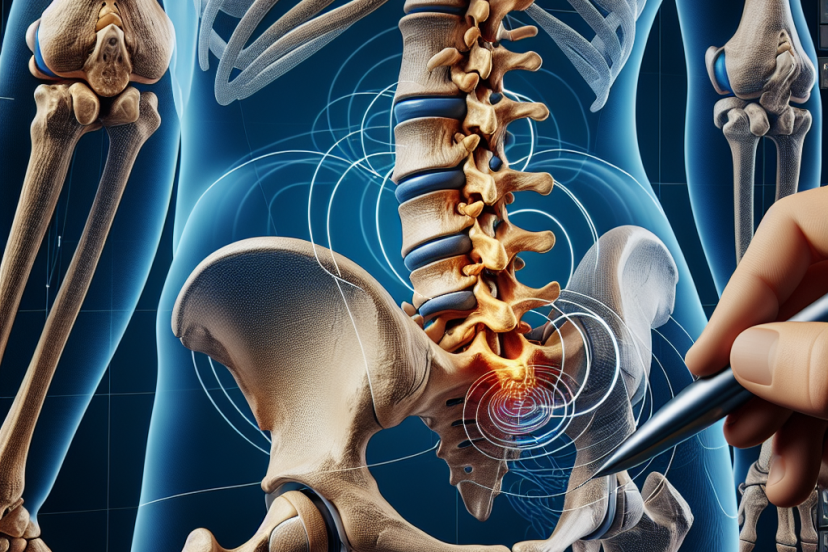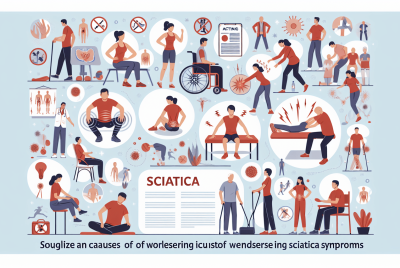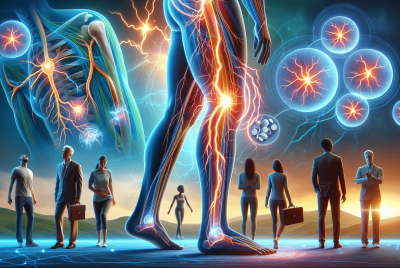What Are The Surgical Options For Severe Back Pain?
If you’ve been dealing with severe back pain that just won’t seem to go away, you may be wondering what your surgical options are. After all, living with chronic pain can be incredibly challenging and affect your quality of life. Fortunately, there are several surgical options available that can provide relief and potentially eliminate your back pain altogether. In this article, we will explore these surgical options in order to help you make an informed decision about your possibilities for a pain-free future.
Introduction
If you’re experiencing severe back pain, you may have already exhausted non-surgical treatment options and are considering surgical interventions. While surgery is typically reserved for cases where conservative methods have not provided relief, it can be an effective solution for certain conditions. In this comprehensive article, we will explore the various surgical options available to treat severe back pain, ranging from non-invasive treatments to more invasive procedures. We will also discuss the importance of consulting with a spine specialist and weighing the risks and benefits before making a decision.
Non-Surgical Treatments
Before delving into surgical options, it’s essential to explore non-surgical treatments that may help alleviate your back pain. These methods aim to manage pain and improve functionality without the need for invasive procedures. Here are some of the non-surgical treatments commonly utilized:
Physical therapy
Physical therapy involves exercises and techniques designed to improve mobility, strengthen muscles, and reduce pain. A trained therapist will work closely with you to develop a personalized treatment plan focused on addressing your specific back pain issues.
Medications
Various medications can be prescribed to manage back pain. Nonsteroidal anti-inflammatory drugs (NSAIDs) are often recommended to reduce inflammation and relieve pain. Muscle relaxants, opioids, and antidepressants may also be suggested by your healthcare provider, depending on the severity and cause of your pain.
Injections
In some cases, injections may be used to provide temporary pain relief or diagnostic information. Steroid injections, nerve block injections, and epidural injections aim to reduce inflammation, block pain signals, or confirm the source of the pain. These can be administered by a pain management specialist or an anesthesiologist.
Lifestyle modifications
Making certain lifestyle changes can have a positive impact on your back pain. This may include adopting proper body mechanics, maintaining a healthy weight, quitting smoking, improving posture, and engaging in regular low-impact exercises such as swimming or walking.
Minimally Invasive Surgical Options
If non-surgical treatments fail to alleviate your back pain, your doctor may suggest exploring minimally invasive surgical options. These procedures are less invasive than open surgeries and typically involve smaller incisions, shorter recovery periods, and reduced risks of complications. Here are some minimally invasive surgical options that may be considered:
Laminectomy
A laminectomy involves the removal of a portion of the vertebral bone called the lamina to relieve pressure on the nerves in the spinal canal. This procedure can be effective in treating conditions such as spinal stenosis or herniated discs.
Discectomy
A discectomy is a surgical procedure performed to remove part or all of a damaged or herniated disc. By removing the disc material pressing on the nerves, a discectomy can relieve pain and improve mobility.
Foraminotomy
Foraminotomy is a procedure that aims to alleviate nerve compression by enlarging the passageways through which the nerve roots exit the spinal canal. By widening the space, pressure on the nerves is reduced, leading to relief from back pain.
Spinal fusion
Spinal fusion involves the fusion of two or more vertebrae to stabilize the spine and reduce pain caused by conditions such as degenerative disc disease, spinal fractures, or spinal deformities. This procedure uses bone grafts, metal rods, and screws to join the vertebrae together.
Artificial disc replacement
Artificial disc replacement is an alternative to spinal fusion. In this procedure, the damaged disc is removed and replaced with an artificial disc made of metal or a combination of metal and plastic. This option allows for some mobility at the treated level while providing pain relief.
Open Surgical Options
In certain cases, open surgical options may be necessary to address severe back pain. Open surgeries typically involve larger incisions, longer recovery times, and a higher risk of complications. Here are some open surgical options that may be considered:
Spinal fusion
Similar to minimally invasive spinal fusion, open spinal fusion involves the fusion of two or more vertebrae. However, open procedures may be necessary when the complexity of the case requires a more extensive approach.
Diskectomy
Diskectomy is the removal of part or all of a damaged or herniated disc through a larger incision, allowing for more direct access to the affected area. This procedure aims to relieve pressure on the nerves and reduce pain.
Kyphoplasty
Kyphoplasty is a procedure performed to treat spinal fractures or collapsed vertebrae. It involves the use of a balloon-like device that is inserted into the fractured area and inflated to restore height, followed by the injection of bone cement to stabilize the vertebrae.
Vertebroplasty
Vertebroplasty is a similar procedure to kyphoplasty but does not involve the use of a balloon. Instead, bone cement is directly injected into the fractured vertebrae to stabilize them and reduce pain.
Emerging Surgical Procedures
As technology and medical advancements continue to evolve, new surgical procedures are constantly being developed to address severe back pain. While still emerging, these techniques show promise in providing alternative treatment options. Here are a few emerging surgical procedures that may be considered:
Radiofrequency ablation
Radiofrequency ablation involves using heat generated by radio waves to destroy nerves responsible for transmitting pain signals. This procedure can provide temporary pain relief in certain cases.
Intradiscal electrothermal therapy
Intradiscal electrothermal therapy involves heating the damaged disc using heat generated by radio waves. This aims to shrink and seal any tears or herniations in the disc, thereby reducing pain.
Spinal cord stimulation
Spinal cord stimulation involves the implantation of a small device that delivers low-level electrical signals to the spinal cord. These signals interfere with the transmission of pain signals, providing relief for those with chronic back pain.
Choosing the Right Surgical Option
Deciding on the most suitable surgical option can be a daunting task. It is crucial to consult with a spine specialist who can evaluate your condition and guide you towards the best course of action. Here are some key factors to consider when choosing a surgical option for severe back pain:
Consulting with a spine specialist
Seeking expert advice from a spine specialist is essential. They will assess your medical history, perform a physical examination, and order any necessary diagnostic tests to determine the underlying cause of your back pain.
Considering the severity and cause of pain
The severity and cause of your back pain will play a significant role in determining the most appropriate surgical option. Certain conditions may require specific procedures, while others may respond better to different approaches.
Evaluating the risks and benefits
Understanding the potential risks and benefits of each surgical option is vital. Your spine specialist will discuss the potential complications, success rates, and expected outcomes based on your specific condition.
Reviewing potential complications
Surgical procedures, even when performed by highly skilled surgeons, come with inherent risks. Make sure to discuss potential complications with your surgeon and understand the steps taken to minimize them.
Recovery and Rehabilitation
Recovery and rehabilitation play a crucial role in successfully managing back pain post-surgery. Here are some key aspects of the recovery process:
Postoperative pain management
Your healthcare team will develop a postoperative pain management plan tailored to your needs. This may include the use of pain medications, physical therapy techniques, and other interventions to ensure a smooth recovery.
Physical therapy and exercises
Following surgery, physical therapy will likely be an integral part of your rehabilitation. Your therapist will guide you through exercises and techniques aimed at restoring strength, flexibility, and function in your back. Adhering to the prescribed exercise program is crucial for long-term recovery.
Follow-up visits and check-ups
Regular follow-up visits and check-ups with your surgeon are essential to monitor your progress, address any concerns, and ensure a successful recovery. These visits provide an opportunity to adjust your treatment plan if needed and track the effectiveness of the surgery.
Conclusion
Severe back pain can be debilitating and significantly affect your quality of life. Surgical options can provide relief for those who have exhausted non-surgical treatments without success. However, it is crucial to explore all possible options, consult with a spine specialist, and thoroughly consider the risks and benefits before making a decision. With the range of surgical options available, advancements in technology, and ongoing research, there is hope for finding the solution that best suits your needs and helps alleviate your back pain. Remember, you don’t have to face this journey alone. Reach out to medical professionals who can help guide you towards a brighter, pain-free future.




